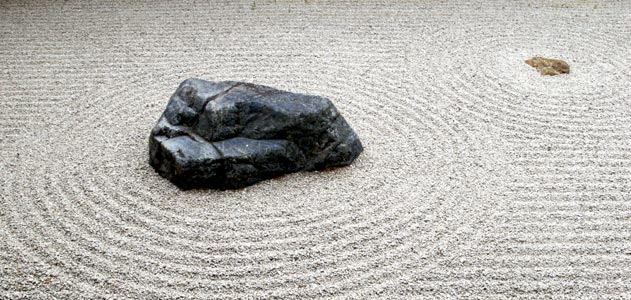 For many foreigners, the archetypal image of Japan is one of elegant simplicity. Japanese symbols such as the zen garden or even the humble nigiri sushi capture this image of beauty achieved using less rather than more. During Japan’s economic heyday, Sony commercialized this aesthetic, bringing beautifully designed Japanese products into the living rooms of the global masses, with Muji more recently helping to cement this image in the public-mind.
For many foreigners, the archetypal image of Japan is one of elegant simplicity. Japanese symbols such as the zen garden or even the humble nigiri sushi capture this image of beauty achieved using less rather than more. During Japan’s economic heyday, Sony commercialized this aesthetic, bringing beautifully designed Japanese products into the living rooms of the global masses, with Muji more recently helping to cement this image in the public-mind.
This is indeed an aesthetic that runs deep in Japanese culture. You only need to think of the Japanese tatami room to get a sense of how truly at home this image of simplicity is to the culture. The concept of wabi sabi in part describes this austere and stripped back way of looking at the world – and whilst it may be a little academic to many Japanese people, there is a real sense in which people here pride themselves on being able to appreciate subtlety, for instance in the taste of local foods such as sashimi or tofu.
With this image of elegant restraint in mind then, I couldn’t help wondering what the hell was going on when taking my first steps around the Japanese Internet. From a Western point of view, most websites here seem cluttered and busy, with a tendency towards information overload. Just look at the Rakuten home page or consider the enduring popularity of the Yahoo portal here as examples. This is in contrast with the stripped back design that has become popular in the West and is best typified by Google’s minimalist search page design.
Looking around the web, I’m not the first to have noticed this, and various theories have been put forward as to the reasons why. One idea is that the Japanese were comparatively late to begin accessing the web via PCs, with much content previously optimized for keitai. As such, Japanese web designers are still playing catch-up with their Western counterparts.
However, you only need to take a look at a couple of Japanese magazines, guide-books or even restaurant menus to realize that this is not the whole story. Here too there is a preference for information heavy layouts, broken down into many small sections in a style that can be quite staggering to foreign eyes at first glance. You can see a few examples here… (https://www.sushi-suzuki.com/sushilog/2012/05/sense-of-beauty-and-information-density-east-v-s-west/
This suggests that there’s actually a preference for this kind of full-on design aesthetic in Japan. This preference is likely due at least in part to the difference in language. Japanese is a very visual language and the Chinese kanji characters that make it up are processed in a different way to the alphabet, allowing for a lot of information to be drawn out relatively quickly. There is also evidence that people living in east Asian cultures tend to take a holistic view of things as opposed to Western people who are more likely to zone in on specific elements of a scene – or in this case web page (Richard Nesbitt’s Geography of Thought is a fascinating read on this subject ). From this perspective, it becomes easier to understand how what may seem an optimal layout through Japanese eyes may be overwhelming to a Western visitor who doesn’t know where they should focus their attention.
However, there is another twist in this tail suggesting that the truth, as ever, is more complicated than any one theory. The recent explosion in popularity of first the iPhone and then Android smartphones in Japan, seems to have been driven in part by their naturalistic and elegant user interfaces. Many users would consider them a step beyond the previous keitai method of navigation. Perhaps then there are opportunities to introduce more elegant solutions, whilst at the same time respecting the fact that preferences for design, aesthetics and presentation can differ across cultures.
